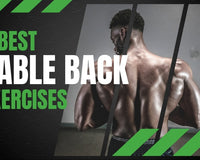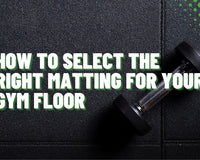Building a big and wide back doesn’t happen by accident. You need more than just pull-ups and deadlifts. This is why horizontal pulling exercises are so important.
Rows, in all their glorious forms, are the foundation of any serious back-building routine. They're simple on paper, just pull something toward your chest, but there's a lot more going on under the surface.
Today, we’ll discuss the best horizontal pulls to add mass, strength, and balance to your physique.
Before we talk about the exercises, let’s look at why horizontal pulls are so important to begin with.
Why Horizontal Pull Exercises Matter

Horizontal pulling exercises are definitely great for aesthetics, but that’s not all. These moves are essential for building balanced strength, improving posture, and keeping your shoulders happy and healthy. If you’re benching like a beast but neglecting your pulls, you’re asking for problems.
By targeting the muscles that pull your shoulder blades together and stabilize your spine, horizontal rows balance out all the pushing movements in your routine. This improves shoulder health, improves compound lifts like squats and deadlifts, and helps you avoid that classic gym bro look: all chest and no back.
Plus, these exercises hit multiple muscle groups at once, which makes them incredibly efficient. You’ll train your lats, traps, rhomboids, rear delts, and biceps in one go.
Related Post: How to Warm Up Before Lifting Weights
What Muscles Do Horizontal Pulls Work?
Horizontal pulls primarily target your back, as well as several other muscle groups. Here are the main muscles targeted by horizontal pulling exercises:
-
Lats (latissimus dorsi): These are the big muscles on the sides of your back, what many refer to as “wings”.
-
Traps (trapezius): Especially the mid and lower traps, which often get ignored when doing other movements.
-
Rhomboids: These help squeeze your shoulder blades together and improve posture.
-
Rear Delts: Often overshadowed by front delts but crucial for a balanced look.
-
Biceps and Brachialis: These assist with pulling and benefit from the workload.
-
Core Muscles: Especially in standing or single-arm variations where stabilization is key.
So yes, horizontal rows grow your back, but they also make you stronger, more balanced, and better equipped for other lifts and real-world movements.
Related Post: Are Deadlifts a Leg or Back Exercise?
Best Horizontal Pulling Exercises
Here we have seven great horizontal pulling exercises for you to try, each of which are great for growing a big back in their own way.
1. Chest-Supported Dumbbell Row

This is the go-to for isolating your upper back without using momentum. It’s great for keeping your form strict and your ego in check.
How to do it
-
Set an incline bench to about 30 degrees.
-
Place dumbbells on the floor or a small bench nearby.
-
Lie chest-down on the bench with your feet planted behind you.
-
Grab the dumbbells and let your arms hang straight down.
-
Row the weights toward your hips, squeezing your shoulder blades at the top.
-
Slowly lower the weights back to the starting position.
Pro Tip: Don’t yank the weights. Think about pulling with your elbows and keeping your neck relaxed.
2. Single-Arm Cable Row

Cables provide constant tension, which makes these rows extra beneficial for muscle-building. Doing them one arm at a time lets you fix muscle imbalances and really stretch the lats.
How to do it
-
Set up an incline bench facing a low cable pulley.
-
Sit sideways with one hand braced on the bench and the other holding the cable handle.
-
Let your working arm fully extend forward.
-
Engage your lat, keep your shoulder down, and pull the handle toward your torso.
-
Slight torso rotation away from the handle is fine — just don’t twist like a pretzel.
-
Control the handle as you extend back to the start.
Pro Tip: Use a slow tempo and focus on a deep stretch at the front. This one’s more about control than heavy weight.
Related Post: Knee Wraps vs Knee Sleeves for Strength Training
3. Standing Dumbbell Row

These hit your lats, traps, and even your your obliques. That’s right, your core gets in on the action too, making this a great compound exercise.
How to do it
-
Grab a dumbbell in one hand and brace the other hand on a wall or rack.
-
Stagger your stance, hinging at the hips until your torso is nearly parallel to the ground.
-
Let the dumbbell hang, then initiate the pull by retracting your shoulder.
-
Row the dumbbell to your hip, not your chest.
-
Lower with control and repeat.
4. Bent-Over Barbell Row

This is a heavyweight back builder. It’s not fancy, but it gets the job done. The heavier the weight, the bigger the gains.
How to do it
-
Grab a barbell with a shoulder-width overhand grip.
-
Hinge at the hips until your torso is about 45 degrees to the floor.
-
Brace your core and let the bar hang in front of your shins.
-
Pull the bar toward your lower ribcage.
-
Control the descent and repeat.
Pro Tip: Don’t bounce or use your legs to cheat the rep. Think strict rows, not deadlifts with flair.
5. TRX Rows
These are perfect for bodyweight training and super easy to adjust in difficulty. Plus, they hit your back without equipment hogging.
How to do it
-
Set the TRX straps to mid-length.
-
Grab the handles and lean back with arms extended and body straight.
-
Row your chest to the handles by squeezing your shoulder blades together.
-
Lower yourself with control.
Related Post: Exercises For Your Erector Spinae
6. Low Row Machine

Machines get a bad rap, but any low row machine is a gym gem. They’re great for isolating each side and going heavy with minimal setup.
How to do it
-
Sit down and grab one handle at a time.
-
Let your arm fully extend for that juicy stretch.
-
Brace your core and pull the handle toward your hip.
-
Return slowly and repeat on each side.
Pro Tip: Do this one at the end of your workout when your stabilizers are tired. Machines let you focus on muscle contraction without worrying about balance.
7. Seal Row

The seal row locks down your form and forces your back to do the work. No cheating, just pure gains.
How to do it
-
Set up a flat bench on boxes so your arms can hang freely.
-
Lie face down with a barbell underneath you.
-
Grab the bar with a shoulder-width grip.
-
Pull the bar straight up to your chest.
-
Lower with control and repeat.
Pro Tip: Keep your legs relaxed and your neck neutral. This is all about upper back precision, not speed or weight.
Wrapping It All Up
Horizontal pulling exercises are your ticket to a stronger, thicker, and better-balanced back.
They complement your push work, improve posture, boost athletic performance, and let’s be honest, they make you look pretty darn good from behind.
Mix up your angles, tempos, and grips to keep the gains coming.





